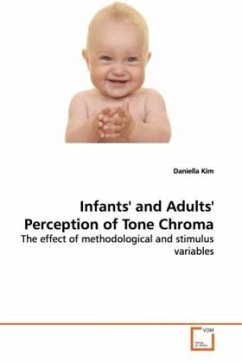Pitch is often described as having two perceptual
correlates; pitch height, which increases with
frequency, and tone chroma, which recurs at octave
intervals. The perception of pitch by normal hearing
adults, although widely studied, is not clearly
understood. Infants' perception of pitch is even
less well-understood. That is, not only is the
previous literature with adults not consistent about
the perceptual reality of tone chroma, but there are
only a few studies studying infants' perception of
pitch. This collection of studies attempts to
understand and explain some of the factors that
might affect pitch perception in infants and
musically untrained adults. In this work, the author
provides a thorough review of the pitch and tone
chroma literature. Then, based on gaps and
questions in the literature, explores some of
the "contextual" issues that affect the perception
of tone chroma by infants and musically untrained
adults.
correlates; pitch height, which increases with
frequency, and tone chroma, which recurs at octave
intervals. The perception of pitch by normal hearing
adults, although widely studied, is not clearly
understood. Infants' perception of pitch is even
less well-understood. That is, not only is the
previous literature with adults not consistent about
the perceptual reality of tone chroma, but there are
only a few studies studying infants' perception of
pitch. This collection of studies attempts to
understand and explain some of the factors that
might affect pitch perception in infants and
musically untrained adults. In this work, the author
provides a thorough review of the pitch and tone
chroma literature. Then, based on gaps and
questions in the literature, explores some of
the "contextual" issues that affect the perception
of tone chroma by infants and musically untrained
adults.








